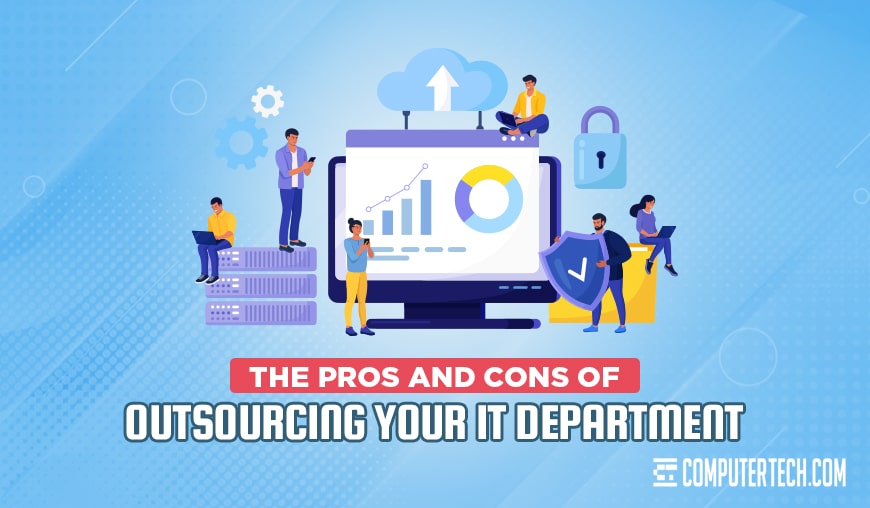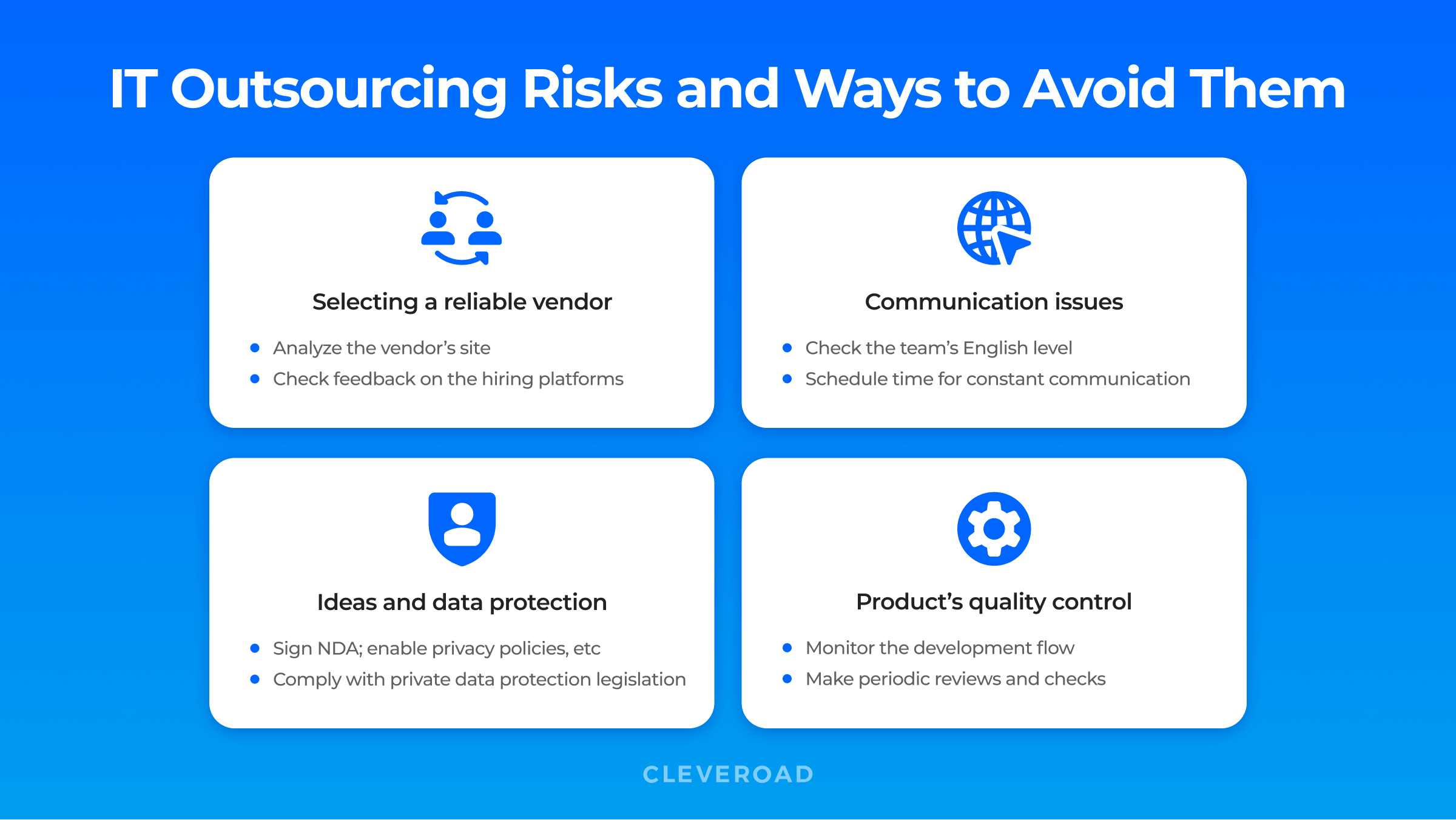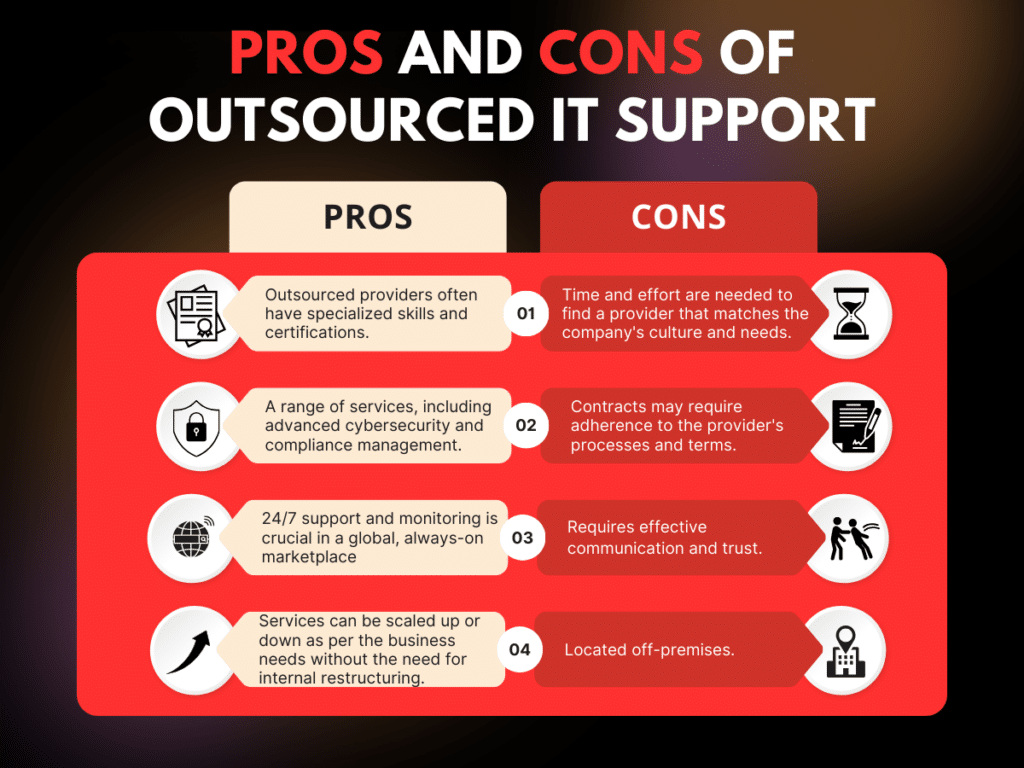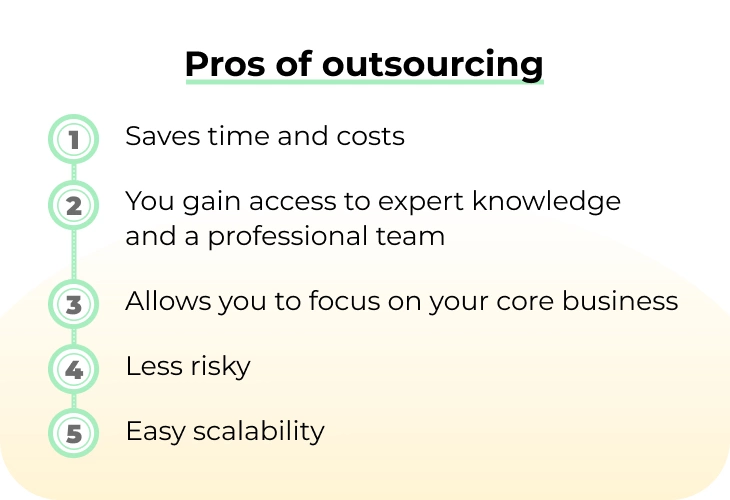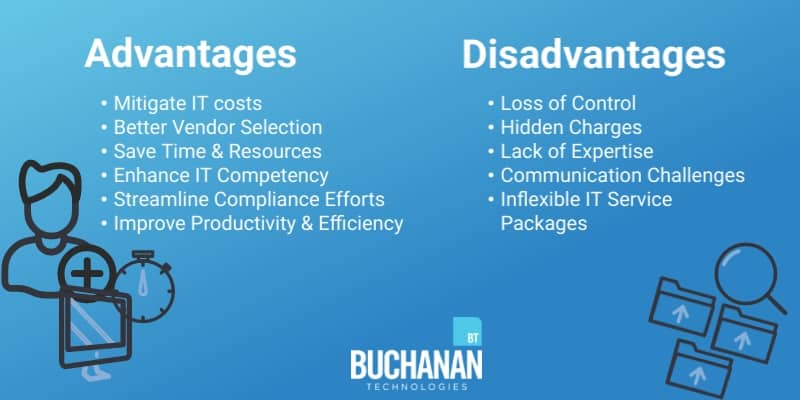Outsourcing It Support Pros And Cons

In an increasingly competitive business landscape, companies are constantly seeking ways to optimize their operations and reduce costs. Outsourcing IT support, a practice that involves contracting with external providers for technical assistance, has emerged as a popular strategy, offering both potential benefits and drawbacks.
This article explores the pros and cons of outsourcing IT support, examining the key considerations that businesses must weigh before making a decision. Understanding these factors is crucial for ensuring that outsourcing aligns with a company's specific needs and goals.
The central question for many businesses considering outsourcing is whether the potential cost savings outweigh the risks associated with relinquishing control over a critical function. The answer, however, is rarely straightforward and depends on a variety of factors specific to each organization.
Benefits of Outsourcing IT Support
One of the most compelling reasons to outsource IT support is the potential for cost reduction. Outsourcing providers often offer economies of scale, allowing them to provide services at a lower cost than an in-house IT department.
This can translate into significant savings on salaries, benefits, training, and infrastructure. Many small and medium-sized businesses (SMBs) find this particularly attractive as it frees up capital for core business activities.
Access to specialized expertise is another significant advantage. Outsourcing providers typically employ a team of IT professionals with diverse skill sets. This allows companies to tap into specialized knowledge and support without having to hire and train dedicated staff for every area of IT.
Outsourcing can also improve efficiency and productivity. External providers often have established processes and technologies in place to resolve IT issues quickly and effectively. This reduces downtime and allows employees to focus on their primary responsibilities.
Scalability is another key benefit. Outsourcing allows companies to easily scale their IT support services up or down as needed, adapting to changing business demands without the burden of hiring or laying off staff. This flexibility is particularly valuable for businesses experiencing rapid growth or seasonal fluctuations.
Drawbacks of Outsourcing IT Support
Despite the potential benefits, outsourcing IT support also carries certain risks. Loss of control is a primary concern for many companies.
Relying on an external provider can make it difficult to maintain oversight and ensure that IT support services are aligned with specific business needs. Effective communication and well-defined service level agreements (SLAs) are essential to mitigate this risk.
Security risks are another significant consideration. Sharing sensitive data with a third-party provider can increase the risk of data breaches and other security incidents. Thorough due diligence, including security audits and contract negotiations, is crucial to ensure that the outsourcing provider has robust security measures in place.
Communication challenges can also arise when outsourcing IT support. Language barriers, time zone differences, and cultural differences can all hinder effective communication and delay resolution times. Establishing clear communication channels and protocols is essential to minimize these challenges.
Potential for hidden costs is another factor to consider. While outsourcing can initially appear to be more cost-effective than maintaining an in-house IT department, unexpected fees and charges can quickly add up. A thorough review of the contract and a clear understanding of all potential costs is essential.
Making the Decision: Key Considerations
Before outsourcing IT support, businesses should carefully assess their needs and goals. This includes evaluating the size and complexity of their IT infrastructure, the level of support required, and their budget constraints.
Choosing the right outsourcing provider is also critical. Companies should conduct thorough due diligence, including checking references, reviewing security policies, and assessing the provider's experience and expertise. Clear and well-defined service level agreements (SLAs) are essential to ensure that the provider meets the company's expectations for performance and availability.
Communication is important for successful outsourcing. Establish clear communication channels and protocols to ensure that IT issues are resolved promptly and effectively.
Conclusion
Outsourcing IT support can offer significant benefits, including cost savings, access to specialized expertise, and increased efficiency. However, it also carries certain risks, such as loss of control, security concerns, and communication challenges.
By carefully weighing the pros and cons, conducting thorough due diligence, and establishing clear expectations, businesses can make informed decisions about whether or not outsourcing IT support is the right choice for them. Ultimately, the success of outsourcing depends on careful planning, effective communication, and a strong partnership between the company and the outsourcing provider.
The decision to outsource IT support is a strategic one that requires careful consideration of a company's unique needs and circumstances. While there is no one-size-fits-all answer, a thorough understanding of the potential benefits and drawbacks is essential for making an informed decision.


